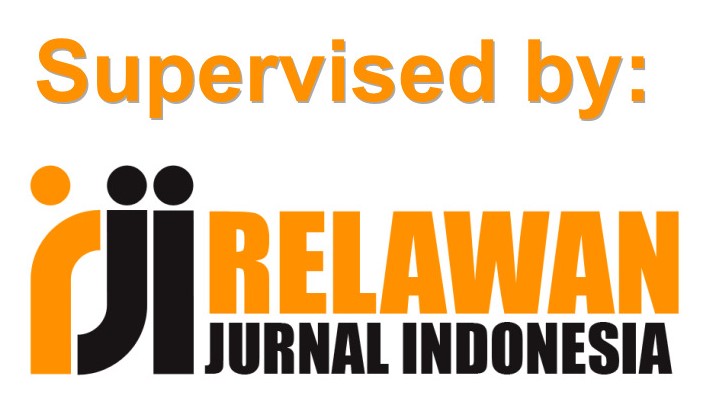Analisis Kinerja Keuangan PT. Semen Baturaja (Persero) Tbk Yang Terdaftar Di BEI Periode 2015-2019
DOI:
https://doi.org/10.31851/jmanivestasi.v4i1.10272Abstract
ABSTRACTÂ
This study aims to determine the value of liquidity, solvency, activity and profitability at PT Semen Baturaja (Persero), Tbk for the 2015-2019 period by analyzing the financial statements. Data The type of data used is in the form of secondary data obtained by indirect data collection techniques in the form of documentation and literature study of the financial statements of the company PT Semen Baturaja (Persero), Tbk which is listed on the Indonesia Stock Exchange (IDX) using descriptive data analysis methods. qualitative. The results of the analysis show that the liquidity ratio with the current ratio in 2015, 2016, 2018, and 2019 has met the industry standard while in 2017 it has not met the industry standard, the quick ratio in 2015, 2016, 2018, and 2019 has met the industry standard while in 2017 did not meet industry standards. The solvency ratio in the debt to asset ratio in 2015-2017 has met the industry standard, while in 2018 and 2019 it has not met the industry standard and the debt to equity ratio in 2015-2017 has met the industry standard, while in 2018 and 2019 it has not met the standard. industry. The activity ratio in fixed assets turnover does not meet industry standards, while total assets turnover does not meet industry standards. And the profitability ratios on return on investment and return on equity do not meet industry standards.
Â
Key words: Liquidity Ratio, Solvency, Activity and Profitability ABSTRAKPenelitian ini bertujuan untuk mengetahui nilai likuiditas, solvabilitas, aktivitas dan profitabilitas pada PT Semen Baturaja (Persero), Tbk periode 2015-2019 dengan cara menganalisis laporan keuangan. Data yang Jenis data yang digunakan yaitu berupa data sekunder yang diperoleh dengan teknik pengumpulan data secara tidak langsung berupa dokumentasi dan studi pustaka laporan keuangan perusahaan PT Semen Baturaja (Persero), Tbk yang terdaftar di Bursa Efek Indonesia (BEI) dengan menggunakan metode analisis data deskriptif kualitatif. Hasil analisis menunjukkan bahwa pada rasio likuiditas dengan current ratio pada tahun 2015, 2016, 2018, dan 2019 sudah memenuhi standar industri sedangkan pada tahun 2017 belum memenuhi standar industri, quick ratio pada tahun 2015, 2016, 2018, dan 2019 sudah memenuhi standar industri sedangkan pada tahun 2017 belum memenuhi standar industri. Rasio solvabilitas pada debt to asset ratio pada tahun 2015 -2017 sudah memenuhi standar industri sedangkan pada tahun 2018 dan 2019 belum memenuhi standar industri dan debt to equity ratio ratio pada tahun 2015-2017 sudah memenuhi standar industri sedangkan pada tahun 2018 dan 2019 belum memenuhi standar industri. Rasio aktivitas pada fixed assets trun over tidak memenuhi standar industri sedangkan pada total assets turn over sudah memenuhi standar industri. Dan rasio profitabilitas pada return on investasment dan return on equity tidak memenuhi standar industri.
Â
Kata Kunci: Rasio Likuiditas, Solvabilitas, Aktivitas dan Profitabilitas.
References
Fahmi, I. (2014). Analisis kinerja Keuangan. Bandung: Alfabeta.
Hery. (2014). Analisis Laporan Keuangan. Cetakan kedua. Jakarta: PT Bumi Aksara.
Hery. (2015). Analisis Kinerja Manajemen. Jakarta: PT Grasindo.
Harmono. (2017). Manajemen Keuangan. Cetakan Keenam. Jakarta: PT Bumi Aksara.
Jumingan. (2014). Analisis Laporan Keuangan. Cetakan Kelima. Jakarta: PT Bumi Aksara.
Kasmir. (2017). Analisis Laporan Keuangan. Cetakan Kedelapan. Jakarta: PT Rajagrafindo Persada.
Sujarweni, V. W. (2019). Analisis Laporan Keuangan. Jakarta: Pustaka Baru Press.
Downloads
Published
Issue
Section
License
The copyright of the received article shall be assigned to the publisher of the journal licensed under a Creative Commons Attribution-NonCommercial 4.0 International License in line with the license, authors and any users (readers and other researchers) are allowed to share and adapt the material only for non-commercial purposes. In addition, the material must be given appropriate credit, provided with a link to the license, and indicated if changes were made. If authors remix, transform or build upon the material, authors must distribute their contributions under the same license as the original.




















